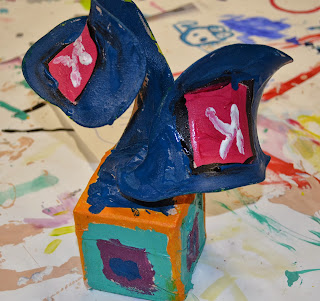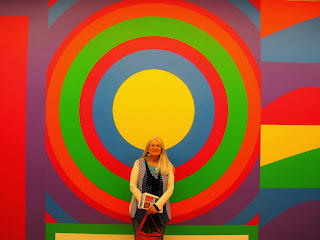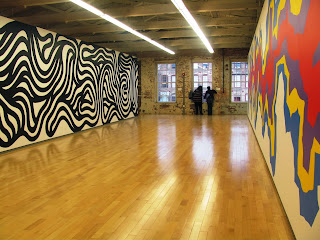 |
| 'Marcel the Shell with Shoes On' made by an attendee at the tooling foil workshop I taught. |
 |
| Tooling foil dog by workshop attendee |
Attendees started by drawing a plan on newsprint.
Hint: for achieving deep relief, use enclosed shapes. Pattern and texture will be added later.
Once the drawing is done, tape it to tooling foil, put a piece of felt underneath for padding, and trace it firmly with a pencil or pen. Make sure you label the back, either with a Sharpie, or with a piece of tape.
If a shaped piece is desired, cut with scissors about 1/2 inch outside of drawing, before removing drawing. Sorry I'm demonstrating sidewaysin this pic!
Smooth down edges on a flat surface, using a Popsicle stick or other flat tool. This amazingly will lessen the sharpness of the edges. I don't know why, but it works like a charm!
Then retrace the lines more deeply, using a blunt pointed tool and two pieces of felt underneath. Once that's done, you can begin tooling areas to bulge outward, working from the back, or areas to sink in, working from the front. You can also smoothly flatten areas by tooling with a flat tool on a hard surface. Again, make sure your back is labeled so you don't pop in something you meant to pop out!
You can add rich texture after the relief work is done, using a sharp pointed tool to add pattern or design. I love the idea of the paisleys in the piece below. I hope the creator of it sends me a photo when it is complete!
Such a variety of work! Abstract designs, suns and moons, dragons, a dog, sunflowers, a Day of the Dead skull, an elephant, Marcel the Shell, some trees, a fish, some owls, and so much more. Twenty-six participants, and no two pieces were alike!
Finally, time permitting, participants painted the foil lightly with hotel soap, painted it with black Speedball ink, and either rubbed it off with paper toweling, or let it dry and removed the ink with steel wool. Here's a few finished pieces. Don't you love the texture and pattern on this fish?
Look at this coin! What an original idea!!!!
We did also talk about how to add selective color; I had several samples. You can use permanent markers, but my favorite way to add color is to use acrylic paint mixed with Mod Podge to make it translucent and shiny. When adding color with paint, use single brush strokes to lay on paint without smearing or removing the ink. Brushing back and forth with cause the ink to smear and the color to get muddy.And finally, we discussed ways to display the pieces. You can glue the finished piece to mat board, or another alternative is to glue it to a dowel which inserts in a block of wood. My students often punched holes in the finished piece, and added yarn, raffia, beads, and more, especially effective on masks.
Everyone had a fabulous time, and was wonderfully successful. I love being able to pay it forward by teaching workshops and I love seeing people leaving with a product that they are proud of!!




































































